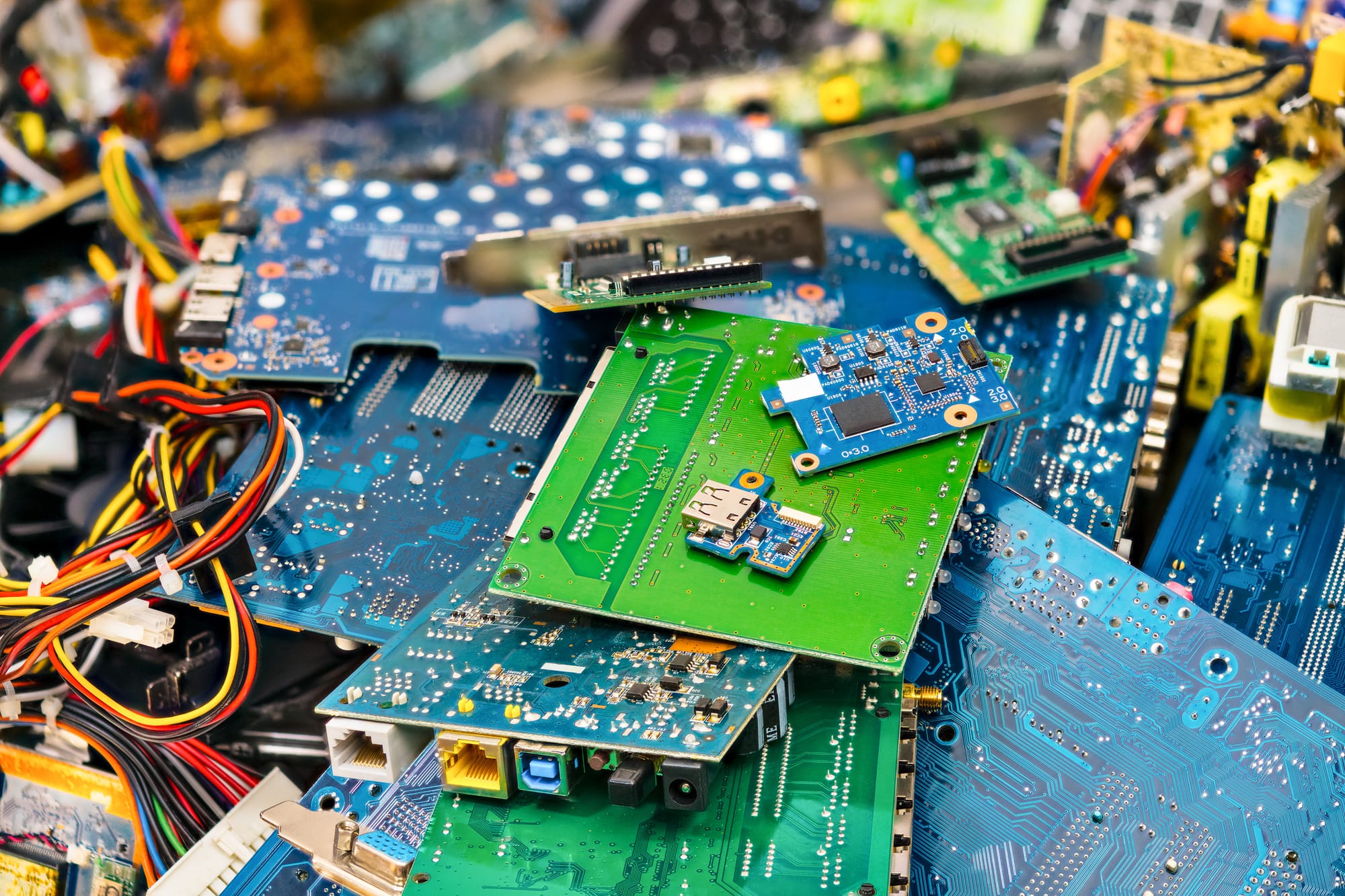
Digital technology is now a major part of education. Even the smallest schools are stuffed full of digital devices, display screens and projectors. Anything that can be digitised is stored online. Lessons are live-streamed, resources are downloadable, and school communications take place through apps and email. Behind the scenes, schools maintain their own servers, host campus-wide Wi-Fi and run complex management systems and other platforms. All told, schooling today is dependent on substantial amounts of digital technology.
This digital dependency is rarely seen as a problem. Any gripes usually centre on potential risks of digital distraction, cyberbullying, breaches of data privacy and so on. These issues prompt vigorous debates over the ‘appropriate’ and ‘right’ ways in which technology should be implemented. At no point, however, is there serious consideration of the long-term sustainability of digital technology use.
To be blunt, digital technology is damaging the environment. I believe the use of digital technology in education (EdTech) is not sustainable in the ways we've grown accustomed to using it.
First, let's dispel any thoughts that the increased use of digital technology in schools is somehow environmentally beneficial. For sure, there are obvious environmental benefits in reduced paper use, using Skype to attend remote meetings, and installing ‘green tech’ such as smart lighting and smart metering. It might also be argued that online classes reduce the carbon footprint of schools and colleges, not least by reducing travel-related emissions of students coming onto campus.
All these technologies uses offer some recompense, but they in no way offset the hugely detrimental life-cycles of the digital products and processes that education is now reliant on. Instead, the end-to-end environmental consequences of any form of digital technology use quickly eclipse any hopes of digital education somehow being a green option. As such, every use of digital technology contributes to the degradation of our planet in ways that education urgently needs to face up to. This includes:
- The raw ingredients of digital devices – what Toby Miller terms the “dirty, material origins” of digital technology. Behind the sleek chrome and glass exteriors, every digital device is constructed from dozens of different metals, and numerous ‘rare earth elements’. From lithium batteries through to copper cabling, EdTech inherently involves the Earth being depleted of non-renewable resources. In the short term, this extraction causes considerable environmental contamination and pollution. In the longer term, this extraction is simply non-sustainable. Alongside the rapid loss of scarce minerals, for example, more than half the copper that will ever be extracted from the Earth has already gone. In basic geological terms, we can't continue to produce digital technology in the ways we currently do.
- The environmentally destructive manufacture and production of digital devices. Regardless of how they are actually used in a classroom, between 70 per cent to 80 per cent of energy expended during the lifetime of a digital device occurs during its initial manufacture. As Crawford and Joler’s forensic ‘anatomy’ of Amazon’s Echo device illustrates, the production of any digital technology “requires a vast planetary network” to facilitate the smelting, processing and mixing of raw materials that are shipped halfway around the world to be assembled. Each of these stages involves the accumulation of harmful waste products, hazardous chemicals and toxic waste disposal.
- The energy-greedy data infrastructures that lie behind digital transactions. In contrast to the abstract notion of data processing and storage occurring somewhere ‘in the cloud’, is the rather less romantic reality of brown-field, climate-controlled data centres and server farms. It's estimated that data centres consume up to three per cent of all global electricity production and account for about two per cent of total greenhouse gas emissions. These figures are fast-rising, and already place the digital data industry roughly equivalent to the airline industry, and mean that educational internet use takes up a significant amount of energy. For example, even a one-off internet search generates a telling amount of CO2. As soon as a student or teacher does anything ‘online’, the impact is felt around the world.
- The environmental cost of dismantling and disposing digital hardware. As the growing problem of ‘e-waste’ shows, microelectronics is an extremely difficult and costly product to recycle. The recycling (often simply the dumping) of devices that are deemed to have outlived their usefulness leads to heightened levels of pollution, contamination and toxic waste in some of the poorest regions of the world. In this sense, the continued imperative to upgrade and keep EdTech ‘up-to-date’ is one of its most destructive qualities.
In light of all these costs and consequences, it's difficult to see how education can continue for much longer with its excessive levels of technology consumption and use. In a near-future of rising sea levels, climate mass migration and low-carbon restrictions, much of the current hype that surrounds EdTech is likely to quickly seem inappropriate if not obscene. Demands for ‘one device per student’, unlimited data storage, live streaming and the expectation for everyone to be ‘always-on’ will seem as anachronistic as 20th-century attitudes towards smoking cigarettes and burning fossil fuels.
In a near-future of rising sea levels, climate mass migration and low-carbon restrictions, much of the current hype that surrounds EdTech is likely to quickly seem inappropriate if not obscene.
In a practical sense, then, it now makes sense to prepare for a near-future where there are insufficient natural resources to produce and sustain the educational use of digital technologies at the levels we've come to expect. If you're not fully convinced by these ecological arguments, then there are also good moral reasons for doing this. Indeed, the environmental issues just outlined are underpinned by a litany of associated ethical failings in terms of exploitation of human labour, the illicit trade in rare earth elements, and the deadly money trail associated with so-called conflict minerals such as tin, tantalum, tungsten and gold. As Ingrid Burrington put it, alongside the environmental degradation “there is blood in every piece of your technology”.
These are all controversies that no-one in education should be comfortable being implicated in. Yet as it currently stands, EdTech is exacerbating all of these issues. Everyone in education therefore needs to ask themselves whether they're happy to continue being part of what is clearly a catastrophic drain on the planet and a fundamental threat to the living conditions and life chances of future generations. If not, then we urgently need to start rethinking the sorts of digital technology use that are really needed in education, and how these might be achieved in more sustainable ways.
This article was originally published on EduResearch Matters. Read the original article.
Monash University Faculty of Education is home to Education Futures, an innovative think tank that undertakes cutting edge translational research, conducts roundtables, forums and other events for educators and policy makers, and regularly publishes ‘thought leadership’ pieces in current and future priority areas of educational practice.





